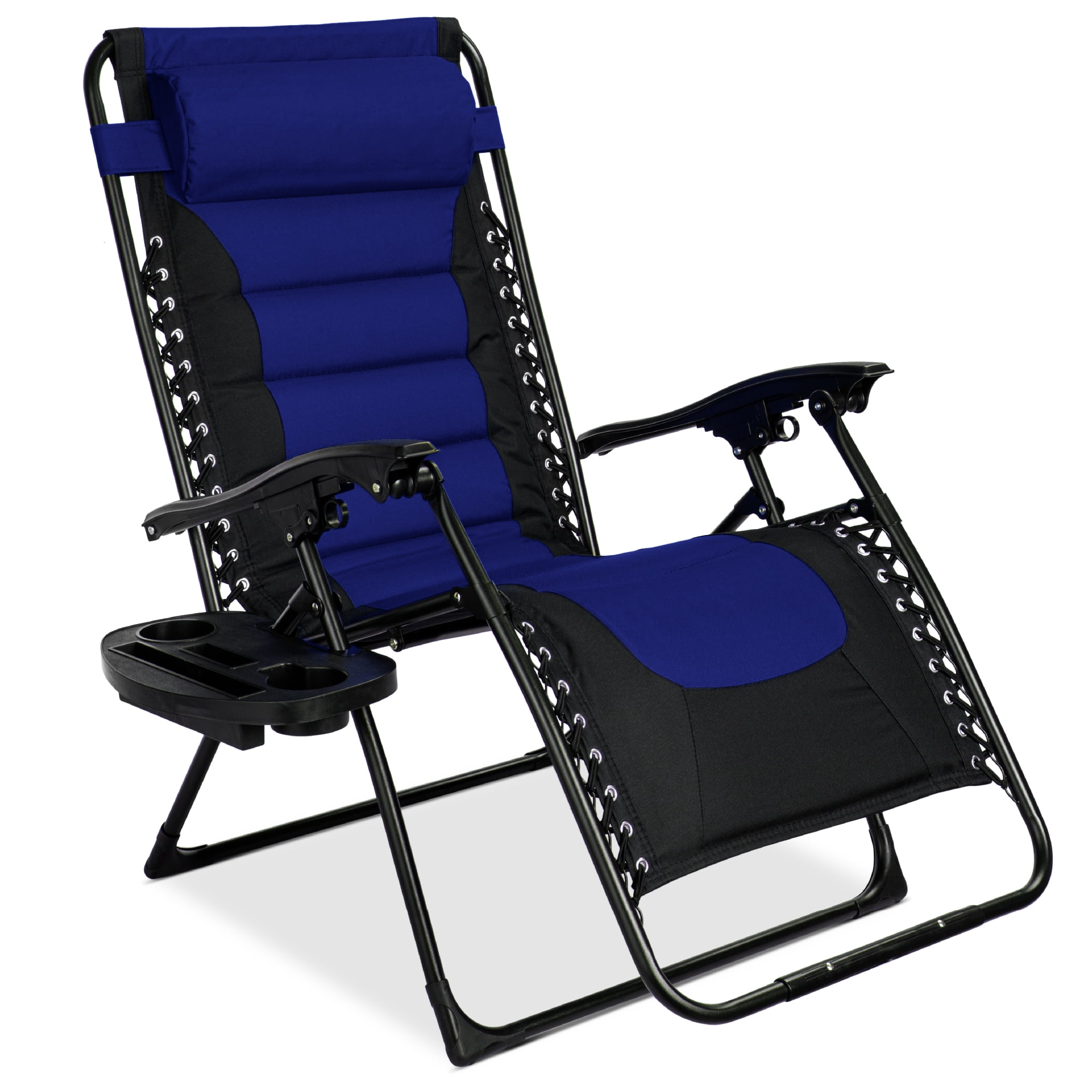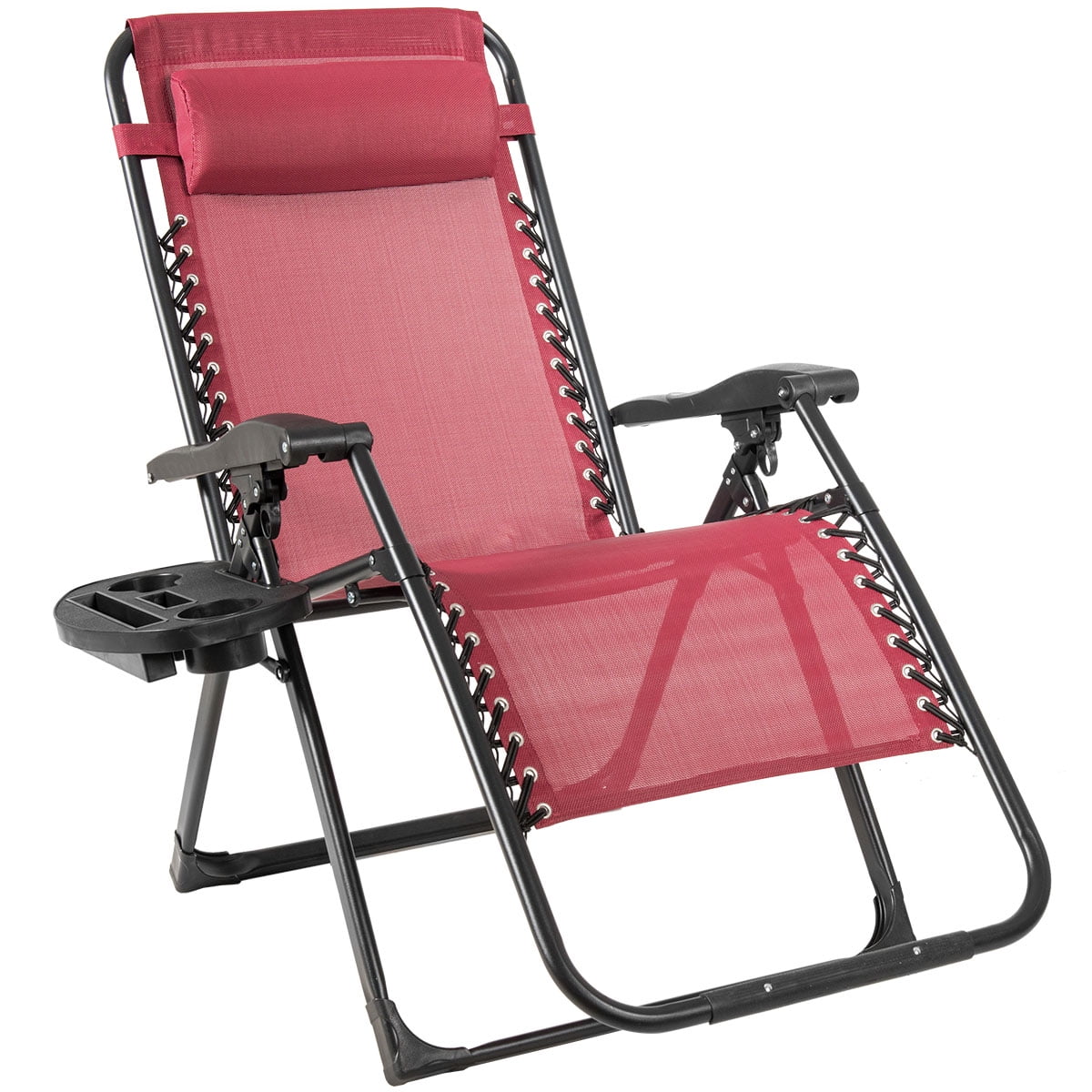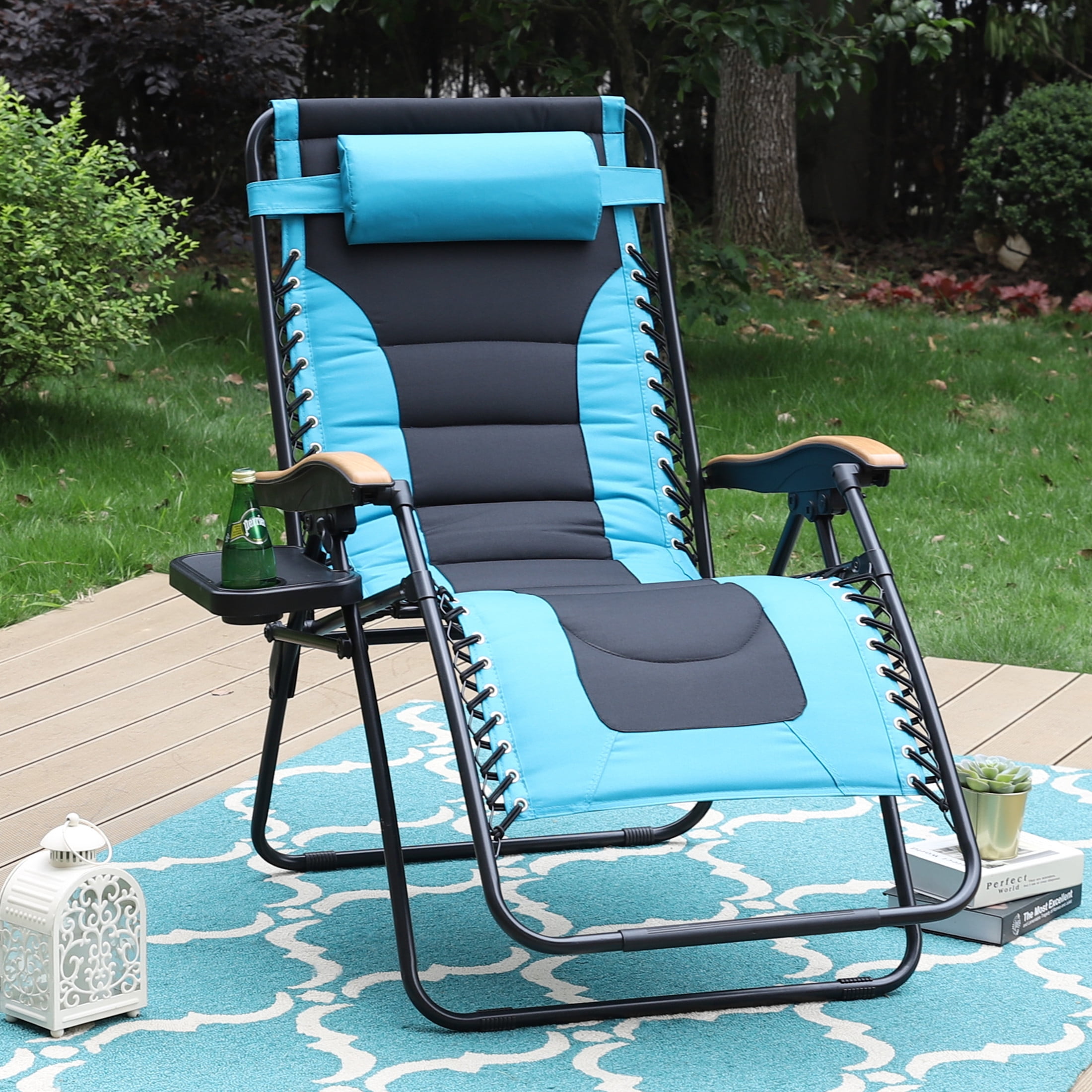Construction and Materials

Heavy-duty zero gravity chairs are built to withstand the test of time and the weight of even the most robust individuals. They are designed for comfort and durability, and their construction and materials play a crucial role in achieving these goals.
The materials used in these chairs are carefully selected to ensure both strength and longevity.
Frame Materials
The frame of a heavy-duty zero gravity chair is the backbone of its structure, providing support and stability. Steel, aluminum, and even wood are commonly used materials for the frame.
- Steel is a robust and durable material that can handle significant weight. It’s often used in heavier-duty models, providing exceptional strength and stability. However, steel frames can be heavier than aluminum frames.
- Aluminum, on the other hand, is a lightweight yet strong metal that is often preferred for its resistance to corrosion. Aluminum frames are typically lighter than steel frames, making them easier to transport and maneuver. They are also more resistant to rust and corrosion, making them a good choice for outdoor use.
- Wood frames, though less common, are a sustainable option that can add a touch of elegance to a zero gravity chair. While they may not be as strong as steel or aluminum, they can be incredibly durable and aesthetically pleasing.
Fabric
The fabric used for the chair’s seating and backrest is crucial for comfort and durability.
- Polyester is a popular choice for its durability, resistance to fading, and water repellency. It’s easy to clean and maintain, making it ideal for outdoor use.
- Nylon is another durable fabric that is known for its strength and elasticity. It’s also breathable, allowing air to circulate and keeping you cool and comfortable.
- Mesh fabrics are often used for their breathability and comfort. They allow air to circulate, keeping you cool and comfortable, even on hot days.
Construction Methods
The construction method employed in a heavy-duty zero gravity chair can significantly affect its durability and weight capacity.
- Welded Frames: Welded frames are extremely durable and can handle significant weight. The welding process creates a strong bond between the metal pieces, ensuring a robust and stable frame.
- Bolted Frames: Bolted frames are also durable and can be easily disassembled for transport or storage. However, they may not be as strong as welded frames.
Weight Capacity and Stability

The weight capacity of a heavy-duty zero gravity chair is crucial for its safe and comfortable use. It determines the maximum weight the chair can support without compromising its structural integrity or functionality. The weight capacity and stability are closely intertwined, as a chair with inadequate weight capacity may not be stable enough to support heavier users.
Factors Influencing Weight Capacity
The weight capacity of a zero gravity chair is influenced by various factors, including the chair’s construction, materials, and design.
- Frame Material: The frame material plays a significant role in determining the weight capacity. Stronger materials, such as steel or aluminum, can support heavier weights than lighter materials like plastic.
- Fabric Strength: The fabric used for the chair’s seating and back support must be durable and capable of withstanding the weight of the user. Higher-quality fabrics with tighter weaves are typically more resistant to wear and tear.
- Joint Strength: The joints where the chair’s frame components connect must be strong and secure. Well-designed joints with reinforced connections contribute to the chair’s overall weight capacity.
- Overall Design: The overall design of the chair, including the shape and size of the frame and the placement of the support points, influences its weight capacity. Chairs with wider bases and multiple support points generally have higher weight capacities.
Stability in Heavy-Duty Zero Gravity Chairs
Stability is paramount in a zero gravity chair, particularly for heavy-duty models. A stable chair ensures the user’s safety and comfort, preventing the chair from tipping or collapsing under weight.
- Wide Base: A wide base provides a larger area of support, increasing stability and reducing the risk of tipping.
- Multiple Support Points: Chairs with multiple support points, such as legs or a base, distribute the weight more evenly, enhancing stability.
- Center of Gravity: The center of gravity of the chair and user should be positioned within the base’s support area. This ensures a balanced distribution of weight and reduces the risk of tipping.
- Anti-Tip Features: Some heavy-duty zero gravity chairs incorporate anti-tip features, such as locking mechanisms or additional support points, to further enhance stability.
Weight Capacity and Stability Tests
To ensure the safety and reliability of heavy-duty zero gravity chairs, manufacturers conduct various weight capacity and stability tests.
- Static Load Test: This test involves applying a static load to the chair for a specific period to assess its ability to withstand weight without deformation or failure.
- Dynamic Load Test: This test involves applying a dynamic load, simulating the movement and force experienced during use, to evaluate the chair’s structural integrity and stability under stress.
- Tip Test: This test involves applying a force to the chair’s edge to determine its resistance to tipping.
Ergonomics and Comfort

The beauty of a zero-gravity chair lies not just in its cool name, but in its ability to provide unparalleled comfort and support. It’s like a warm hug from your favorite armchair, but with a scientific twist!
Ergonomic Design Features, Heavy duty zero gravity chair
Zero-gravity chairs are meticulously engineered to mimic the weightless sensation astronauts experience in space. This isn’t just a gimmick; it’s about aligning your body in a way that reduces pressure points and promotes proper posture.
- Recline Angle: The hallmark of zero-gravity chairs is their ability to recline to a specific angle, typically around 128 degrees. This angle shifts your body weight distribution, taking pressure off your spine and joints. Think of it as a gentle, yet effective, decompression session.
- Lumbar Support: These chairs often feature adjustable lumbar support, which helps maintain the natural curvature of your lower back. This is crucial for preventing back pain and promoting good posture. Imagine your back being cradled by a supportive, yet flexible, hug.
- Adjustable Headrest: A comfortable headrest is essential for complete relaxation. Many zero-gravity chairs offer adjustable headrests, allowing you to find the perfect angle for your neck and head. This can help reduce tension headaches and improve circulation.
How Ergonomics Enhance Comfort
The ergonomic design of zero-gravity chairs is all about maximizing comfort and minimizing stress on your body.
- Reduced Pressure Points: By shifting your body weight distribution, these chairs take pressure off your spine, hips, and knees. This is particularly beneficial for people who spend long hours sitting, as it helps prevent discomfort and fatigue.
- Improved Circulation: The reclined position in a zero-gravity chair promotes better blood circulation, especially in the legs and feet. This can reduce swelling and improve overall well-being.
- Enhanced Relaxation: The combination of proper support and weight distribution creates a sense of weightlessness, promoting relaxation and reducing stress. It’s like a mini-vacation for your body!
Adjustable Features for Personalization
Zero-gravity chairs are designed to cater to individual needs and preferences. They offer a range of adjustable features that allow you to customize your comfort experience.
- Recline Angle Adjustment: Most zero-gravity chairs allow you to adjust the recline angle to find the perfect position for your body. Some even feature multiple recline positions, offering greater flexibility and customization.
- Lumbar Support Adjustment: The ability to adjust the lumbar support allows you to tailor the chair to your specific back shape and needs. This ensures proper spinal alignment and prevents back pain.
- Armrest Adjustment: Adjustable armrests allow you to position your arms comfortably, reducing tension in your shoulders and neck.
- Footrest Adjustment: Some zero-gravity chairs even offer adjustable footrests, allowing you to elevate your legs and improve circulation.
Durability and Longevity
A heavy-duty zero gravity chair is an investment, and like any good investment, you want it to last. You want to relax and enjoy the benefits for years to come, not worry about it breaking down after a few uses.
Heavy duty zero gravity chair – Several factors contribute to the longevity of a zero gravity chair. The materials used in its construction, the quality of its craftsmanship, and how well you care for it all play a part. Let’s explore these key factors and how they contribute to a chair’s long-term performance.
Heavy duty zero gravity chairs are designed for ultimate relaxation and support, offering a weightless experience. If you’re looking for a more casual yet comfortable option, consider the big joe chair gray , known for its plush, beanbag-like design. While not as sturdy as a zero gravity chair, it provides a cozy and versatile seating solution for various settings, whether you’re watching TV, reading a book, or just lounging around.
Maintenance Procedures
Regular maintenance is crucial for extending the life of your zero gravity chair. Think of it like an annual checkup for your car; a little preventative care goes a long way.
While a heavy-duty zero gravity chair offers unparalleled comfort for adults, don’t forget the little heroes in your life! A paw patrol chair at Big W provides a fun and exciting seating option for kids, letting them enjoy their favorite characters while relaxing.
And just like a zero gravity chair, a Paw Patrol chair can be a source of comfort and enjoyment, creating special moments for both kids and adults.
- Clean Regularly: Dust, dirt, and debris can accumulate on your chair, potentially leading to wear and tear. Regular cleaning with a damp cloth helps prevent this. For fabric chairs, vacuuming can help remove loose dirt and debris.
- Inspect for Damage: Look for any signs of damage, such as tears in the fabric, loose bolts, or cracks in the frame. Addressing these issues promptly can prevent further damage.
- Lubricate Moving Parts: If your chair has any moving parts, like the reclining mechanism, it’s essential to lubricate them regularly. This helps to prevent friction and wear, ensuring smooth operation.
- Store Properly: When not in use, store your zero gravity chair in a dry, covered area. This protects it from the elements and prevents moisture damage.
Warranty Information and Customer Reviews
Warranty information and customer reviews can provide valuable insights into the durability of a particular brand or model. A good warranty indicates the manufacturer’s confidence in the quality of their product. Positive customer reviews often highlight the chair’s durability and longevity.
“I’ve had this chair for five years now, and it’s still going strong. It’s been through thick and thin, and it’s held up beautifully. The quality is top-notch, and I would definitely recommend it.” – Satisfied Customer
Safety Considerations

While zero-gravity chairs are designed for relaxation and comfort, it’s crucial to understand the potential safety concerns and precautions to ensure a safe and enjoyable experience.
Safety Features and Recommendations
To minimize potential risks, zero-gravity chairs are often equipped with safety features, and it’s essential to follow specific recommendations for safe usage.
- Sturdy Base and Construction: Look for chairs with a wide, stable base and robust construction to prevent tipping or collapse. The base should be designed to distribute weight evenly and provide a solid foundation.
- Weight Capacity Limits: Always adhere to the manufacturer’s specified weight capacity. Exceeding this limit can compromise the chair’s structural integrity and lead to instability or failure.
- Locking Mechanisms: Ensure the chair has locking mechanisms for the reclining positions, particularly when adjusting to the zero-gravity angle. These mechanisms should be easy to use and reliable, preventing accidental movement or slippage.
- Proper Assembly and Maintenance: Follow the manufacturer’s instructions for proper assembly and regular maintenance. This includes checking for loose parts, worn components, or signs of damage.
- Use on a Level Surface: Always use the chair on a flat, level surface to ensure stability and prevent accidental tipping. Avoid using it on uneven or inclined surfaces.
- Avoid Excessive Reclining: While the zero-gravity position offers comfort, it’s generally recommended to avoid reclining to the extreme position for prolonged periods. This can potentially strain your back or neck muscles.
- Gradual Adjustment: When reclining or adjusting the chair, do so gradually to prevent sudden movements or loss of balance.
- Proper Posture: Maintain good posture while using the chair. Avoid slouching or twisting your body in a way that could strain your back or neck.
- Supervision for Children and Elderly: Children and elderly individuals should always be supervised while using zero-gravity chairs. Their ability to safely operate and adjust the chair may be limited.
Safety Guidelines and Regulations
In addition to manufacturer recommendations, there are general safety guidelines and regulations that apply to furniture, including zero-gravity chairs.
- Flammability Standards: The chair’s materials should meet flammability standards to minimize the risk of fire hazards.
- Durability and Strength Testing: Chairs undergo rigorous testing to ensure their durability, strength, and stability.
- Consumer Product Safety Commission (CPSC): The CPSC in the United States sets safety standards for furniture and other consumer products. They publish guidelines and regulations to ensure the safety of these products.
- International Standards Organizations (ISO): ISO sets international standards for various products, including furniture. Their standards cover safety, performance, and quality aspects.
Market Trends and Future Developments: Heavy Duty Zero Gravity Chair
The heavy-duty zero gravity chair industry is experiencing a surge in popularity, driven by the increasing focus on wellness, comfort, and outdoor living. This trend is fueled by several factors, including the growing demand for ergonomic seating solutions, the rise of remote work and home offices, and the increasing popularity of outdoor activities.
Emerging Technologies and Design Trends
The future of heavy-duty zero gravity chairs is brimming with exciting innovations. The integration of emerging technologies is set to revolutionize the way we experience relaxation and comfort.
- Smart Features: Imagine a chair that adjusts to your body temperature, plays your favorite music, or even massages you on demand. Smart features are being incorporated into zero gravity chairs, offering a personalized and interactive experience.
- Sustainable Materials: As sustainability becomes increasingly important, manufacturers are exploring eco-friendly materials like recycled plastic and bamboo to create durable and environmentally conscious chairs.
- Modular Design: The future holds modular designs that allow users to customize their chairs with different accessories and features, catering to individual preferences and needs.
- Advanced Ergonomics: Expect advancements in ergonomics, with chairs that provide superior support and pressure distribution, minimizing strain and promoting optimal comfort.
